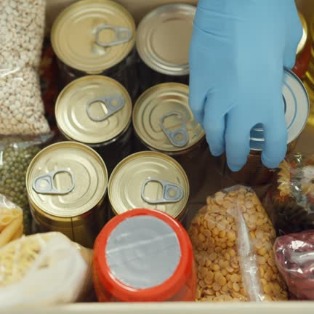Table of Contents
Freeze Dried Food Storage: 25-Year Shelf Life Guide

Freeze-dried foods are a cornerstone of long-term food storage, offering unmatched shelf life and nutrient retention. Whether you’re a prepper building an emergency stockpile or a homesteader preserving harvests, mastering storage techniques ensures your food stays safe and flavorful for decades. Below, we break down shelf life data, storage best practices, and a prepper’s checklist for success.
Shelf Life Comparison Chart: Freeze-Dried vs. Pantry Storage
| Food Type | Pantry Shelf Life | Freeze-Dried Shelf Life |
|---|---|---|
| Dairy (cheese, milk) | 6–12 months | 25+ years |
| Grains (rice, pasta) | 1–2 years | 25+ years |
| Meats (chicken, beef) | 1–2 years (canned) | 25+ years |
| Fruits & Vegetables | 1–3 years (dehydrated) | 25+ years |
| Eggs | 3–5 years (powdered) | 25+ years |
Why Freeze-Dried Wins:
Moisture removal (1–2% residual) prevents bacterial growth.
No preservatives needed.
The Prepper’s Checklist for Long-Term Storage
1. Ideal Storage Conditions
Temperature: 15°C–25°C (59°F–77°F) – Avoid extreme heat or freezing.
Humidity: Below 15% – Use silica gel packs in storage areas.
Light: Store in dark places (UV degrades nutrients).
2. Packaging Tools
Mylar Bags: Lightweight, airtight, and puncture-resistant.
Oxygen Absorbers: Use 300–500cc per gallon-sized bag to eliminate O₂.
Food-Grade Buckets: Store Mylar bags inside for rodent/insect protection.
3. Rotation Scheduling
Label Everything: Note packaging dates and expiration.
First In, First Out (FIFO): Use older batches first.
Annual Check: Inspect for leaks, moisture, or odor changes.
Step-by-Step Storage Guide
1. Preparing Freeze-Dried Food
Cool Completely: Ensure food is room-temperature before sealing.
Portion Sizes: Package meals in single-serving Mylar bags for convenience.
2. Sealing with Mylar Bags & Oxygen Absorbers
Fill the Mylar bag ¾ full.
Add oxygen absorbers (e.g., 2 x 300cc for a 1-gallon bag).
Seal with a heat sealer or iron (leave a small opening to press out air first).
Place sealed bags in buckets with tight-fitting lids.
Emergency Food Preparation Tips
Rehydration: Use cold or hot water depending on the dish (e.g., cold for fruit salads, hot for soups).
No Cooking Needed: Many freeze-dried foods (like fruits or cereals) can be eaten dry.
Calorie Density: Prioritize high-energy foods (peanut butter, meats) in your stockpile.
Why Freeze-Dried Food is a Prepper’s Best Friend
Space Efficiency: 90% lighter than canned goods.
Nutrition: Retains 97% of vitamins and minerals.
Versatility: Rehydrate into meals or snack dry.
Final Thoughts
With Mylar bags, oxygen absorbers, and proper storage conditions, freeze-dried food can sustain you through emergencies for decades. By following this guide, you’ll build a stockpile that’s not just survivable—but nutritious, flavorful, and ready for anything.
